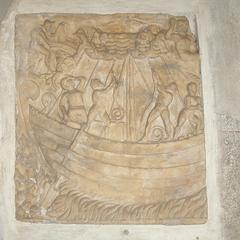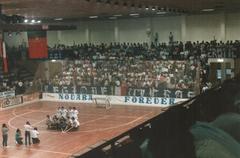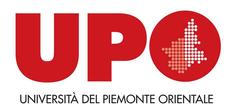Palazzo Tornielli Bellini, Novara, Italy: Visiting Hours, Tickets, and Historical Significance
Date: 03/07/2025
Introduction
Palazzo Tornielli Bellini, nestled in the historic center of Novara, Italy, stands as a testament to centuries of architectural evolution and noble legacy. Originally built in the late 15th century and expanded over time, this palazzo reflects the layered history of Novara, blending Renaissance, Baroque, and Neoclassical elements. From aristocratic residence and political stage to a contemporary cultural venue, Palazzo Tornielli Bellini offers visitors an immersive journey through art, history, and community engagement. This guide details the palazzo’s rich heritage, architectural highlights, practical visitor information, and tips for making the most of your visit. For the latest updates on visiting hours, tickets, and events, consult the official resources and tourism portals. (palazzotornielli.com, a-novara.it, NovaraVive, FAI Novara)
Table of Contents
- History and Cultural Importance
- Architectural Evolution and Features
- The Tornielli and Bellini Families’ Legacy
- Notable Historical Events
- Restoration and Modern Use
- Visitor Information
- Frequently Asked Questions (FAQ)
- How to Plan Your Visit
- Sources & Further Reading
History and Cultural Importance
Palazzo Tornielli Bellini’s origins date to at least the late 15th century, with records of significant restoration in 1462. Initially the residence of Giovanni Giacomo Paltro, the local castellan, the palazzo eventually became the seat of the influential Tornielli family, who shaped Novara’s social and political life for generations. The building later passed to the Bellini family, who contributed to its philanthropic and educational legacy in the 18th and 19th centuries.
The palazzo has witnessed pivotal moments in Italian history, from Napoleon Bonaparte’s presence during the Napoleonic Wars to King Carlo Alberto’s abdication in 1849. Over the centuries, it has adapted to changing times, serving as a noble residence, a financial institution, and now a cultural landmark open for special events and guided visits. (NovaraVive)
Architectural Evolution and Features
Palazzo Tornielli Bellini exemplifies the harmonious layering of architectural styles:
- Renaissance Foundations: The original quadrangular layout, rusticated stonework on the ground floor, and the symmetry of the main façade reflect Renaissance ideals. The central courtyard, surrounded by arcaded porticoes and robust Tuscan columns, offers a serene space typical of Italian palatial design. (Novara Turismo)
- Baroque and Rococo Additions: 18th-century renovations brought ornate balconies, wrought-iron balustrades, polychrome decorative schemes, and gilded stuccoes. The grand staircase, attributed to Pellegrino Tebaldi, and the frescoed ceilings are hallmarks of this period.
- Neoclassical Refinements: 19th-century updates introduced decorative urns, finials, and classical motifs, along with new artistic commissions and furnishings.
- Interior Highlights: The piano nobile features interconnected reception rooms with silk damask panels, marble fireplaces, and parquet flooring. Notable artworks include ceiling frescoes depicting mythological and allegorical scenes, and rare 15th-century kitchen fireplaces with dual flues. (A-Novara)
The palazzo’s hanging garden, designed by Giuseppe Roda, is a tranquil retreat with formal paths, boxwood-edged flowerbeds, and panoramic views.
The Tornielli and Bellini Families’ Legacy
The Tornielli family rose to prominence in Novara from the early modern period, investing in urban and rural estates as a reflection of their status. Palazzo Tornielli Bellini became their urban centerpiece—its expansion and embellishment under Luigi Gaudenzio Tornielli and Gerolamo Tornielli marked the family’s social ambitions. The Bellini family, owners since 1751, continued this legacy, most notably with Countess Giuseppa Tornielli Bellini’s founding of the Scuola di Arti e Mestieri in 1837. (NovaraVive, Noi della BPN)
Notable Historical Events
Palazzo Tornielli Bellini has played host to major historical episodes:
- Napoleon Bonaparte signed a peace agreement here in 1797.
- King Carlo Alberto abdicated in the palazzo after defeat at the Battle of Novara (1849).
- Napoleon III and Vittorio Emanuele II met here in 1859 to plan the Battle of Magenta.
These moments cement the palazzo’s status as both a political stage and a symbol of Novara’s strategic importance. (NovaraVive)
Restoration and Modern Use
After periods of neglect, the palazzo was carefully restored in the late 20th century. Original decorative schemes and architectural features have been preserved, allowing the building to serve as the seat of the Province of Novara and as a venue for cultural events. Its courtyard remains a lively community space during events like “Cinema sotto le Stelle,” while special openings, such as the “Giornate FAI di Primavera,” allow the public to experience its grandeur. (altopiemontemag.it, FAI Novara)
Visitor Information
Visiting Hours & Tickets
- Openings: The palazzo is primarily accessible during special cultural events (e.g., FAI Days, Giornate FAI di Primavera), and by guided tour only. Availability is limited; check FAI Novara or A-Novara for current schedules.
- Tickets/Donations: Admission is usually donation-based (suggested €10, €8 for FAI members). Reservations are required and can be made online via FAI or local portals.
- Tour Duration: Guided tours typically last 45–60 minutes.
Accessibility
- The palazzo has made efforts to improve accessibility, with ramps and elevators in some areas. However, due to its historic structure, certain sections may remain inaccessible to those with mobility impairments. Contact organizers in advance for specific information.
Guided Tours & Special Events
- All visits are guided, with expert commentary on the building’s art, architecture, and history. Tours are primarily in Italian, with English options available by advance request.
- The palazzo occasionally hosts lectures, exhibitions, and cultural programs during national heritage days.
Travel Tips & Nearby Attractions
- Location: Via Greppi, central Novara, a short walk from the Basilica di San Gaudenzio and the Broletto.
- Getting There: Easily accessible by foot from the train station; parking is available nearby.
- Nearby Sights: Combine your visit with other Novara landmarks and enjoy local cafés and restaurants for a complete cultural itinerary.
Frequently Asked Questions (FAQ)
Q: What are the visiting hours of Palazzo Tornielli Bellini?
A: The palazzo is open only during special events and guided tours. Check official schedules before planning your visit.
Q: How can I book a visit?
A: Advance reservation is strongly recommended. Book via FAI or local tourism websites.
Q: Is the palazzo wheelchair accessible?
A: Partial accessibility is available; some historic areas may remain inaccessible. Contact ahead for details.
Q: Are the tours available in English?
A: Most are in Italian, but English tours may be arranged upon request.
Q: Can I visit without a reservation?
A: No, due to limited openings and small group sizes, advance booking is essential.
Q: Are photos allowed inside?
A: Policies vary; always ask your guide before taking photos.
How to Plan Your Visit
- Check event calendars on FAI Novara or A-Novara for upcoming openings.
- Book your guided tour online well in advance.
- Prepare for your visit by reviewing virtual tours and images on official sites.
- Download the Audiala app for personalized guides, maps, and travel tips.
- Plan to visit nearby attractions for a full day of cultural exploration in Novara.
Sources & Further Reading
- Palazzo Tornielli Bellini Official History
- A-Novara: Palazzo Tornielli
- NovaraVive: I Palazzi Tornielli
- FAI Novara: Exclusive Visits
- Comune di Novara
- Novara Turismo
- Novara Cultura
- Regione Piemonte
- Noi della BPN



